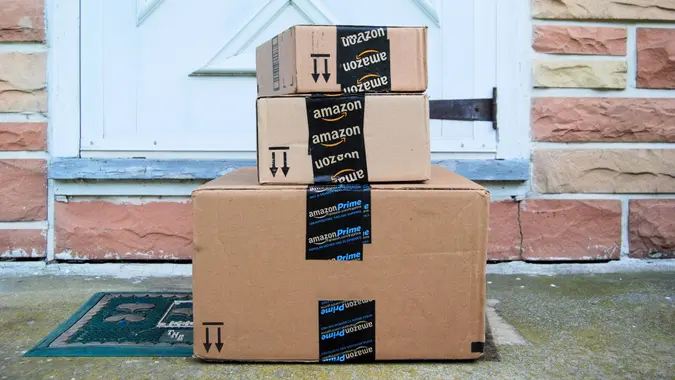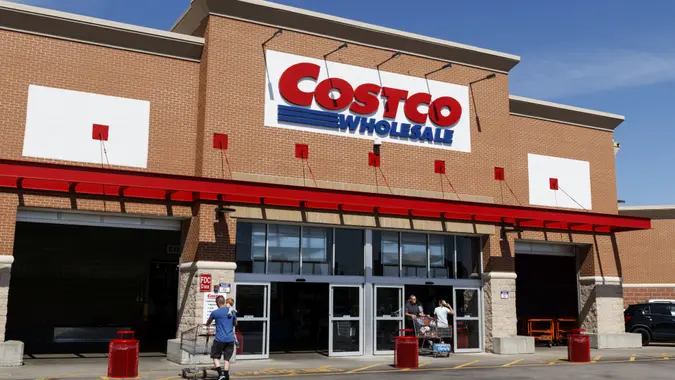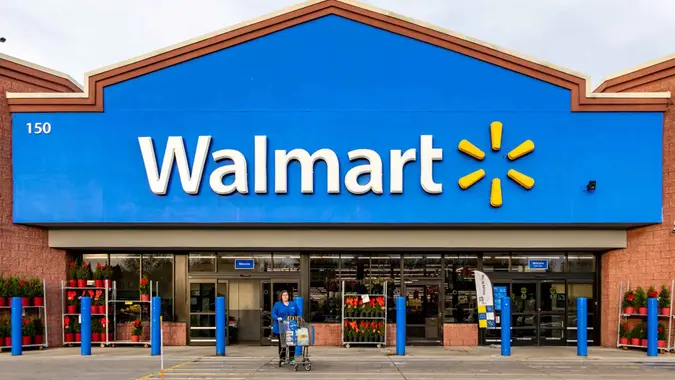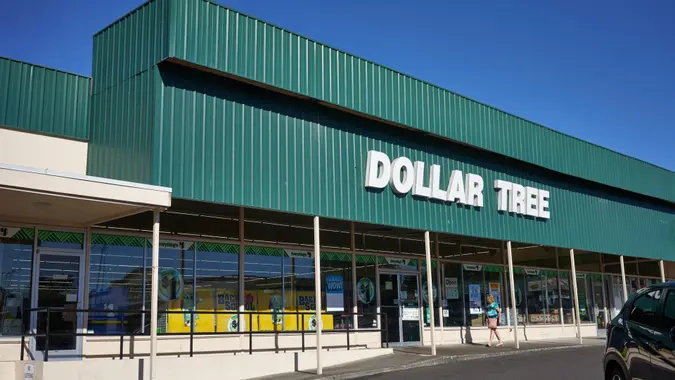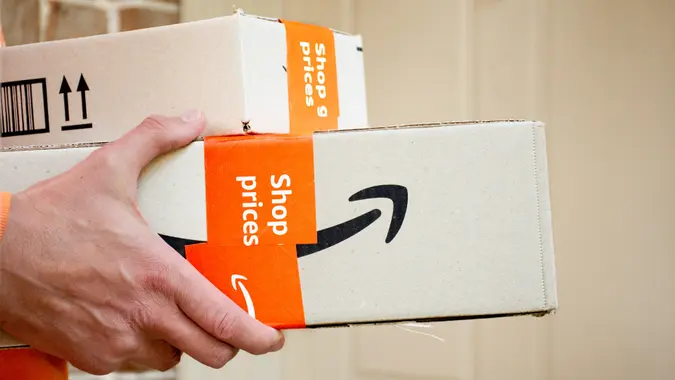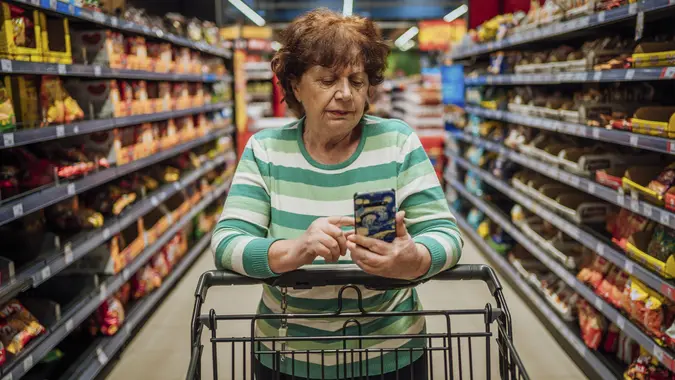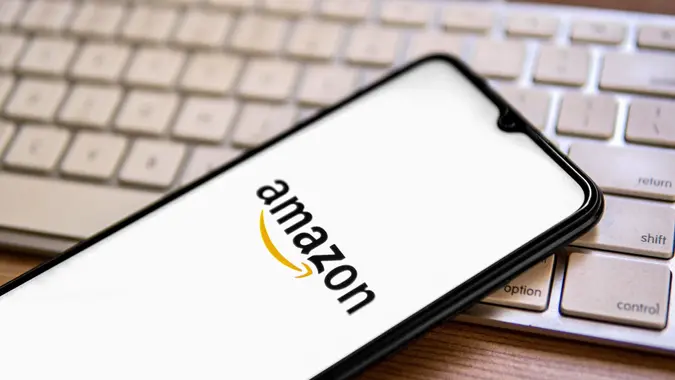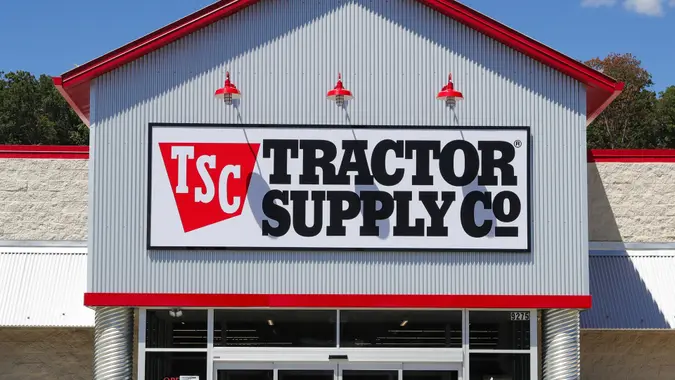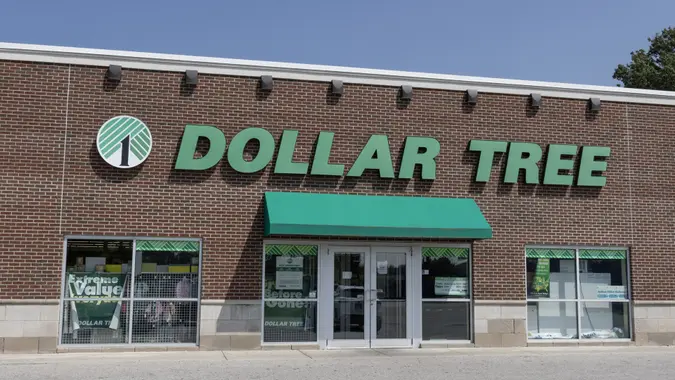4 Ways Grocery Stores Get You To Spend More — and How To Stop

Commitment to Our Readers
GOBankingRates' editorial team is committed to bringing you unbiased reviews and information. We use data-driven methodologies to evaluate financial products and services - our reviews and ratings are not influenced by advertisers. You can read more about our editorial guidelines and our products and services review methodology.

20 Years
Helping You Live Richer

Reviewed
by Experts

Trusted by
Millions of Readers
Even with the best shopping list and an airtight budget, your grocery store often has sneaky ways of getting you to spend more money. Some of them are obvious, like the impulse sections right at the register, but others are more covert. If you want to save more money on your next grocery store run, you’ll need to get familiar with the tricks that grocery stores use to hike up your total and keep you adding stuff to your cart.
Bundle Deals
You might think you’re saving big on that buy three for $10 deal, but the truth is that your grocery store has mastered sales tricks that convince you that you’re catching a great deal. If you went in planning to buy just one and walk out with multiples, you’ve just helped your grocery store clear out old stock while giving them more money than you originally planned to.
For example, if the original price of one item is $5.45, but there’s a buy four for $20 deal, you’re probably thinking that you’ll save $1.80, but you actually just spent $14.55 more than you planned. These bundle deals are often paired with “limited-time” language to spark a sense of urgency that makes you want to buy now as opposed to waiting.
So how can you avoid this trick pricing? Here are a few tips:
- Don’t go for these deals unless you’re going to use these items before they spoil.
- Resist the “buy now” urge. If the deal is good, it’ll often resurface.
- Do the math before you put it in your cart to find out if it’s truly a good deal.
Eye-Level Placement
You might not notice it, but grocery stores often place the pricier brand-name products directly at eye level. And it’s not just placement. Companies spend millions on eye-catching designs and color schemes to earn their spot in your cart. They know that you’re more likely to grab the items you see first, even if it costs more. Conversely, the cheaper store brand versions are often placed on lower or higher shelves, which makes them harder to find.
Children often get targeted with these strategic placement tactics, too. Researchers at the National Institute of Health (NIH) found that many brand-name cereals and other child-targeted foods are placed on lower shelves directly in children’s reach. Essentially, it means betting on your child’s “pester power” to influence your shopping decisions.
If you don’t want your grocery store subconsciously influencing your shopping list (and your budget), try taking these steps:
- The first choice isn’t always the best. Scan the top, bottom and middle of shelves for the best price.
- Intentionally shop for store brands when possible.
- Put small children in the cart or talk with them before going into the store to set expectations.
- Avoid the most tempting aisles when possible.
Impulse Zones and Checkout Temptations
We’re all familiar with the candy, gum and magazines at the register that banks on the split decision to add just one more thing to your cart. But those impulse zones are everywhere else in the store, too. You’ll find them on the end caps, packed with seasonal displays and foods. It’s the bulk bins stocked with seemingly good deals. It’s the free samples stand that makes you want to pick up an item that wasn’t on your list. Because when you’re bombarded with tons of choices, eventually you hit decision fatigue and adding one more thing becomes “why not?” instead of “no.”
If temptation seems to plague you at the grocery store, here’s how you can fight it:
- Bring a water bottle or chew gum to keep yourself occupied.
- Come prepared with a list and set a timer for how long you’ll need to get everything.
- Pay with cash so you’re not tempted to go over budget.
- Pre-order your groceries and have them delivered to your car or home.
Store Layout and Design
Before you get to the produce, milk or meat sections, you typically have to walk past all the things you don’t need. That’s by design. When you have to traipse through the aisles of desire to get to the essentials, you’re more likely to add things that will increase your grocery bill. The longer you meander through the aisles, the more time you have to pick up impulse purchases.
How can you combat this? Start with the necessities. Instead of navigating through unnecessary aisles, make a beeline for the produce, meats and dairy sections. You’ll spend less time in the middle aisles since you want to keep your perishables cold. It also helps to grab the store map from their app or online, so you know exactly where to go. The employees there may know the store better than you, so it can be helpful to order your groceries for pickup or delivery instead of wandering through the store.
More From GOBankingRates
- 5 Luxurious Winter Clothing Items You Can Find at Costco for Less
- 5 Little Luxuries To Buy at Dollar Tree This December
- 4 Low-Risk Accounts Financially Savvy People Trust for Reliable Returns - And How You Can Use Them
- How Middle-Class Earners Are Quietly Becoming Millionaires -- and How You Can, Too
 Written by
Written by  Edited by
Edited by 





